Discover 11 hidden attractions, cool sights, and unusual things to do in Nikkō (Japan). Don't miss out on these must-see attractions: Nikkō Tōshō-gū, Futarasan jinja, and Tamozawa Imperial Villa. Also, be sure to include Shōyō-en in your itinerary.
Below, you can find the list of the most amazing places you should visit in Nikkō (Tochigi).
Table of Contents
Nikkō Tōshō-gū
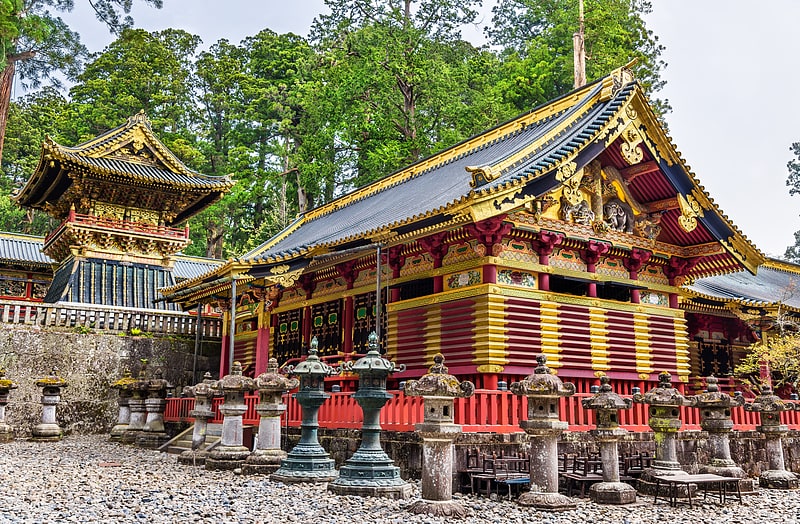
Also known as: 日光東照宮
Ornate circa-1636 shogun shrine complex. Nikkō Tōshō-gū is a Tōshō-gū Shinto shrine located in Nikkō, Tochigi Prefecture, Japan.
Together with Futarasan Shrine and Rinnō-ji, it forms the Shrines and Temples of Nikkō UNESCO World Heritage Site, with 42 structures of the shrine included in the nomination. Five of them are designated as National Treasures of Japan, and three more as Important Cultural Properties.[1]
Address: 2301 Sannai, Nikko, 321-1431 Nikkō
Futarasan jinja

Also known as: 日光二荒山神社
Mountain-top 8th-century Shinto shrine. Futarasan jinja is a Shinto shrine in the city of Nikkō, Tochigi Prefecture, Japan. It is also known as Nikkō Futarasan Shrine, to distinguish it from the Utsunomiya Futarayama Jinja, which shares the same kanji in its name. both shrines also claim the title of ichinomiya of former Shimotsuke Province. The main festival of the shrine is held annually from April 13 to April 17. The shrine consists of three geographically separate sections. The main shrine is located between Nikkō Tōshō-gū and the Taiyū-in Mausoleum. Many visitors go to all three, as well as to Rinnō-ji; which are part of the Shrines and Temples of Nikkō UNESCO World Heritage Site. The "middle shrine" is located of the shore of Lake Chuzenji and the "inner shrine" is located at the summit of Mount Nantai, the volcano overlooking the lake. The shrine possesses two swords that are National treasures of Japan. Additionally, dozens of buildings and cultural artifacts are listed as National Important Cultural Properties. The precincts were also designated a National Historic Site.[2]
Address: 2307 Sannai, 321-1431 Nikko
Tamozawa Imperial Villa
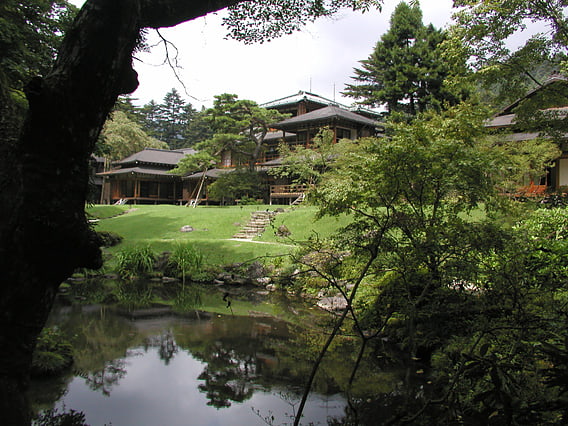
Tamozawa Imperial Villa is a former imperial summer residence in Nikkō, Tochigi Prefecture, Japan.
It was constructed for Emperor Taishō in 1899 and served as a hide-out for emperor Hirohito during World War II. The former imperial residence is now open for the public as museum and garden. The villa is one of the largest wooden buildings of Japan and blends traditional Edo and early modern Meiji era and Taisho era architecture.[3]
Address: 8-27 Honcho, 321-1434 Nikko
Shōyō-en

Garden in Nikko, Japan. Shōyō-en is a Japanese garden located next to the Sanbutsudō Hall of Rinnō-ji Temple in Nikkō. It was constructed in early Edo period, but reformed in the beginning of 19th century. The garden was given its name by a Confucian scholar Issai Sato. There is a pond containing carp in the middle; stone lanterns, bridges, bamboo fences, a pagoda, and a small tea house adorn the garden.
Shōyō-en Garden was designed to look like Lake Biwa and the surrounding scenery in Shiga Prefecture known as the "Eight Views of Omi".[4]
Akechidaira Ropeway

Also known as: 明智平ロープウェイ
The Akechidaira Ropeway is Japanese aerial lift line in Nikkō, Tochigi, operated by Nikkō-Kōtsū. The Tōbu Group company mainly operates bus lines in the city. The observatory has a view of Kegon Falls, Lake Chūzenji, and Mount Nantai. The line opened in 1933, and reopened in 1950.[5]
Address: Hosoo Fukazawa, 321-1445 Nikko
Shrines and Temples of Nikkō
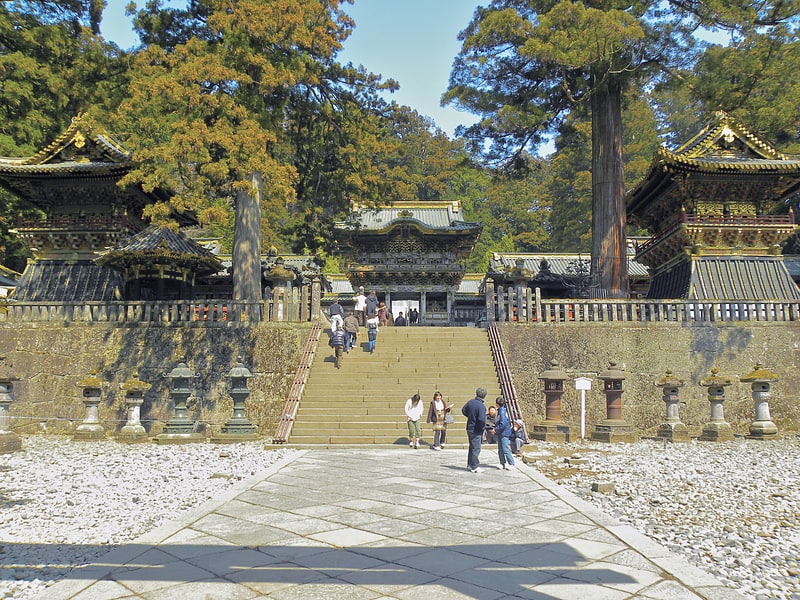
Also known as: 日光の社寺
The UNESCO World Heritage Site Shrines and Temples of Nikkō encompasses 103 buildings or structures and the natural setting around them. It is located in Nikkō, Tochigi Prefecture, Japan. The buildings belong to two Shinto shrines and one Buddhist temple. Nine of the structures are designated National Treasures of Japan while the remaining 94 are Important Cultural Properties. UNESCO listed the site as World Heritage in 1999.[6]
Nikko Botanical Garden
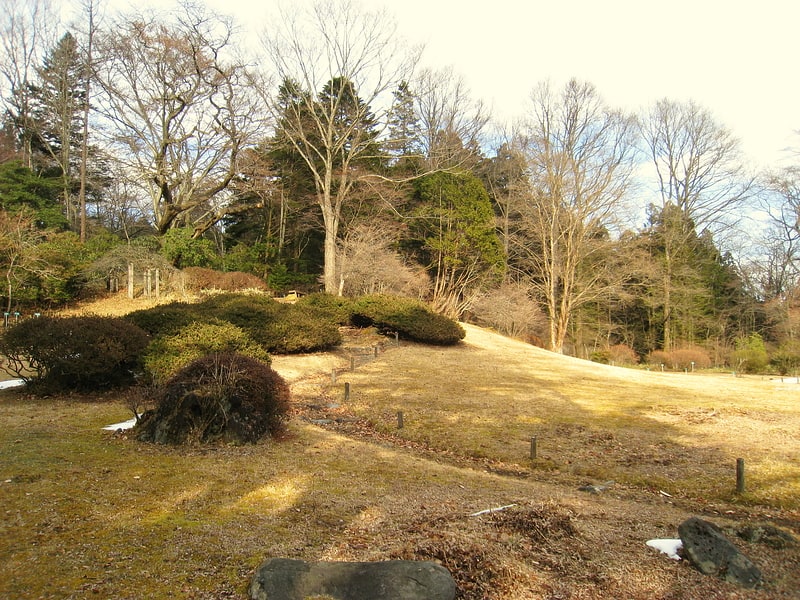
Also known as: 日光植物園
Botanical garden in Nikko, Japan. The Nikko Botanical Garden is a botanical garden operated by the Graduate School of Science, University of Tokyo, and located at 1842 Hanaishi, Nikkō, Tochigi, Japan, on rolling terrain with streams and ponds at 647 meters above sea level. It is open daily except Mondays during the warmer months; an admission fee is charged.
The garden was established in 1902 as a branch of the Koishikawa Botanical Garden, Tokyo, to specialize in the study of alpine plants. It was first located near Toshogu Shrine, but in 1911 moved to its current site, and in 1950 enlarged to include part of the Tamozawa Goyotei garden, a summer house of Japan's royal family.
Today the garden contains about 2,200 species (130 species of pteridophytes, 70 species of gymnosperms, and 2,000 species of angiosperms), with good collections of temperate trees and shrubs, including 22 of the 24 indigenous Japanese Acer species, more than 10 species of Japanese Prunus, and 80 rhododendron species. Many herbaceous species are grown beneath the trees, as well as more specialized collections in rockeries, bog gardens, and a fern garden (about 60 species). The rockeries contain about 100 species of Japanese alpine plants, together with plants from the Himalayas and Korea.[7]
Rinnō-ji
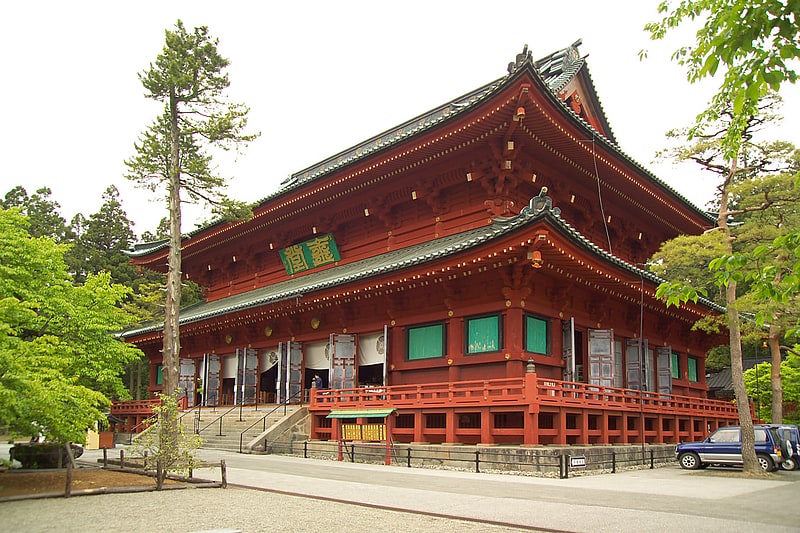
Also known as: 輪王寺
8th-century temple with museum and garden. Rinnō-ji is a Tendai Buddhist temple in the city of Nikkō, Tochigi Prefecture, Japan.[8]
Shinkyō Bridge
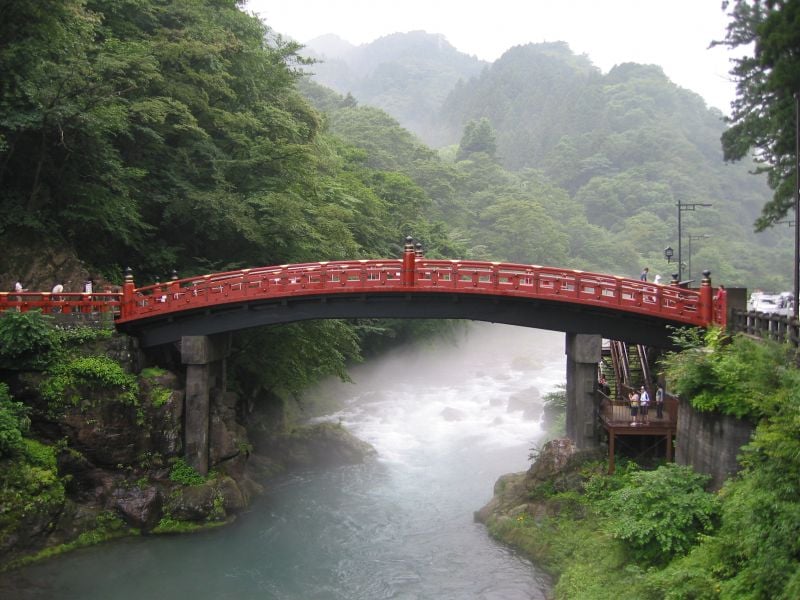
Bridge
Address: 2307 Sannai, 321-1431 Nikko
Jin guhoteru li shi guan
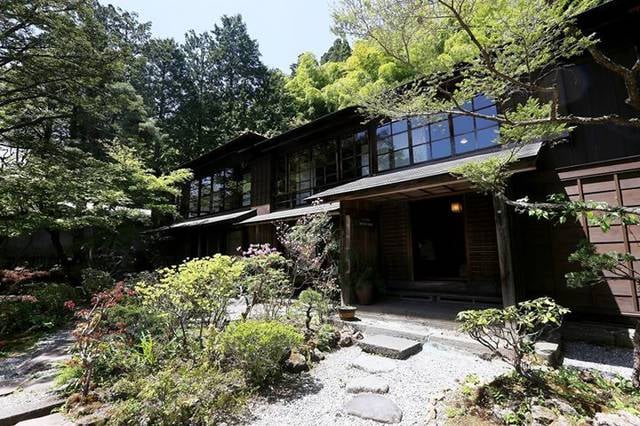
Museum
Mt. Nantai
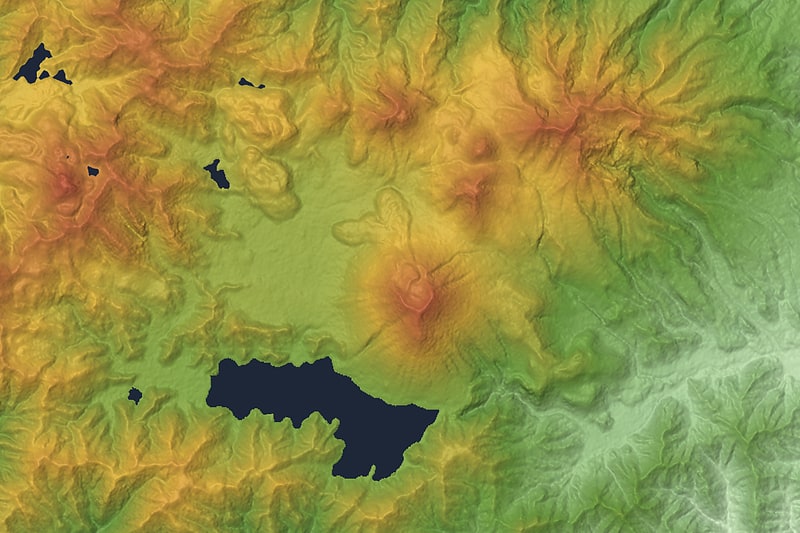
Also known as: 男体山
Stratovolcano in Japan. Mount Nantai is a stratovolcano in the Nikkō National Park in Tochigi Prefecture, in central Honshū, the main island of Japan. The mountain is 2,486 metres high. A prominent landmark, it can be seen on clear days from as far as Saitama, a city 100 km away.
Alongside Mount Nikkō-Shirane, Mount Nantai is one of the newest volcanic edifices in the National Park. Scientific studies of the volcano's geological structure began in 1957 and have established that it was formed roughly 23,000 years ago and that its last eruption was 7000 years ago. The volcano was classified as active by the Japan Meteorological Agency in June of 2017.
Since its first known ascent by Buddhist monk Shōdō Shōnin in the 8th century AD, Mount Nantai has become a sacred mountain and a site of pilgrimage in Buddhism and Shinto. As such, it is currently maintained by Futarasan jinja, a Shinto shrine whose go-shintai (御神体) constitutes Mount Nantai. With Tōshō-gū and Rinnō-ji, the site forms the Shrines and Temples of Nikkō, a UNESCO World Heritage Site. Archaeological excavations conducted here from the 19th to 20th centuries have unearthed many artifacts, dating from the end of the Nara period in the 8th century AD to the Edo period from the 17th to 19th centuries. A few of these have been declared Important Cultural Properties by the Japanese Agency for Cultural Affairs.
Mount Nantai is listed among the 100 Famous Japanese Mountains as written by mountaineer and author Kyūya Fukada.[9]